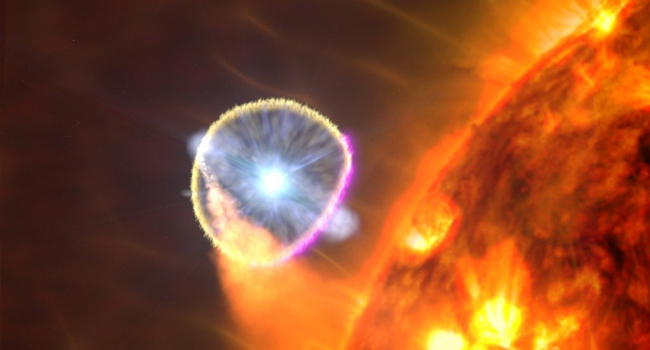
Once in a lifetime phenomenon: This year we will observe a star explosion that occurred 3,000 years ago
In 2024, a rare event is expected -- a stellar explosion that occurs approximately once every 80 years. This star is located at a distance of about 3,000 light years from Earth, but its flare can be observed with the naked eye - for several days.
Bill Cooke, lead for NASA's Meteoroid Environment Office (MEO) at NASA’s Marshall Space Flight Center in Huntsville, Alabama, told Fox News Digital that astronomers cannot give an exact date for this phenomenon, but it is known that it will happen this year and will last for several days, after which the star will “quiet down.” Previously, a telescope was required to see this star, but at some point it will flare to such a brightness that it can be seen with the naked eye. Right now it can already be seen in a small telescope, as it shines brighter than usual.
We are talking about a star in the constellation T Coronae Borealis, which is sometimes called the “Blaze Star”. Flares of this star have already been recorded twice -- on May 12, 1866 and February 9, 1946. According to Cook, its brightness is comparable to the North Star. And it flares up about once every 80 years.
Interestingly, the flare we'll be seeing this year actually happened 3,000 years ago: that's how long it took the light from this star to reach us.
“At the time this star exploded, 3,000 years ago, we were just ending the Bronze Age,” Cook said. — David reigned in Palestine. “All this happened in our country, but it was in such a distant past that this explosion occurred - 3,000 years ago.”
What is the expected outbreak?
The white dwarf "pulls" material from a nearby companion star (in this case, a red giant). This material accumulates on the white dwarf's surface until it becomes so dense and hot that it explodes into space, causing the star to shine brighter than usual.
And it will look as if a new bright star has appeared in the sky, somewhere to the right of the constellation Hercules. After a few days, however, its brightness will decrease significantly.
According to Cook, this phenomenon is much rarer than the total solar eclipse observed on April 8: a person can see several such eclipses in his life, and the next such solar flare will occur in 79 years.
- Related News
- Perseverance finds rock on Mars with signs of life on Earth (photo)
- On 25th anniversary of Chandra telescope, NASA released 25 photos previously unseen by the public
- Rare intermediate-mass black hole has been discovered at the center of our galaxy
- Stone "snowman" and pure sulfur crystals on Mars։ Remarkable discoveries by Perseverance and Curiosity
- When will humanity settle on Mars? Interview with Gernot Grömer
- TESS telescope discovers super-hot exoplanet the size of Neptune
- Most read
month
week
day
- Buyers massively complain about Samsung's Galaxy Buds 3 and Buds 3 Pro headphone, even finding hair in the box 822
- With today's mortgage interest rates, banks simply cannot sell products in 2025: Interview with Vardan Marutyan 813
- Ants and bees 'taught' tiny drones to navigate without GPS, beacons or lidars 677
- Samsung will release Galaxy Tab S10+ and Ultra tablets and Galaxy Z Fold 6 Slim and Galaxy w25 smartphones in October 642
- Mass production of iPhone SE 4 will begin this October, with sales starting in 2025 603
- Insider unveils specs of all smartphones of iPhone 17 series, including the 17 Slim 600
- Telegram's monthly active audience reaches 950 million 586
- What dangers can feature phones from unknown manufacturers conceal? 559
- For the first time in history, iPhone will get a Samsung camera 556
- What are the problems in the construction industry? Interview with Vardan Marutyan 552
- Archive
